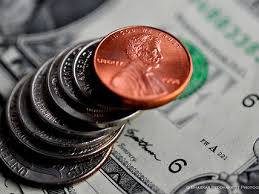Midterm Elections Saw Fewer Donors, but They Wrote Bigger Checks
< < Go Back
One Likely Cause Is Supreme Court Ruling to End Overall Limit on How Much Individuals Can Donate.
The 2014 midterm elections were funded by fewer people giving larger sums to candidates, parties and political-action committees, a study of Federal Election Commission disclosures finds.
The study by the nonpartisan Center for Responsive Politics found that the number of individual donors declined by nearly 20% from the prior midterm election, in 2010. Nearly 667,000 donors contributed more than $200 this election cycle through mid-October of this year, the analysis found.
Meanwhile, spending by candidates and groups remained fairly flat this election, at about $3.6 billion. Taken together, those findings indicate that donors increased the dollar amount of their contributions.
One likely cause of the change was a Supreme Court decision in April that ended the $123,200 limit on how much individuals could donate to candidates, parties and PACs per cycle. Certain caps remain—for example, individuals can give a maximum of $2,600 to a candidate for a primary election and the same for a general election. But the ruling removed the aggregate limit.
In the 2014 election cycle, at least 498 donors gave more than the amount that would have been allowed before the Supreme Court ruling in that case, McCutcheon v. FEC. The top five of those donors gave a combined $1.9 million, more than the amount that 15 donors would have been permitted to give before the ruling.
Seven of the top 10 donors gave most or all of their contributions to Republican candidates, according to the Center for Responsive Politics.
The numbers don’t include donors who gave to super PACs, whose donors weren’t subject to limits even before the McCutcheon ruling. Both parties received hundreds of millions in contributions to super PACs this cycle.
The center’s analysis also doesn’t capture donors who give to 501(c)4 groups, also known as social-welfare groups, that aren’t required to disclose who gives them money.
In 2010, the National Republican Senatorial Committee—Senate Republicans’ main campaign arm—raised $44 million from nearly 77,000 donors, with an average contribution of about $590, according to FEC disclosures. This cycle, the committee raised $57 million from less than half the number of donors—36,000—with an average contribution of $1,100.
The change in number of donors wasn’t quite as large on the Democratic side. The Democratic Senatorial Campaign Committee’s number of donors declined by about a third from 2010 to 2014, and the average contribution increased by about $180.
The committees are required to disclose information only about donors who give more than $200. The NRSC raised about $10 million less in 2014 than in 2010 from donors who gave less than $200. The DSCC raised about $10 million more in 2014 from such donors.
More From The Wall Street Journal (subscription required):




